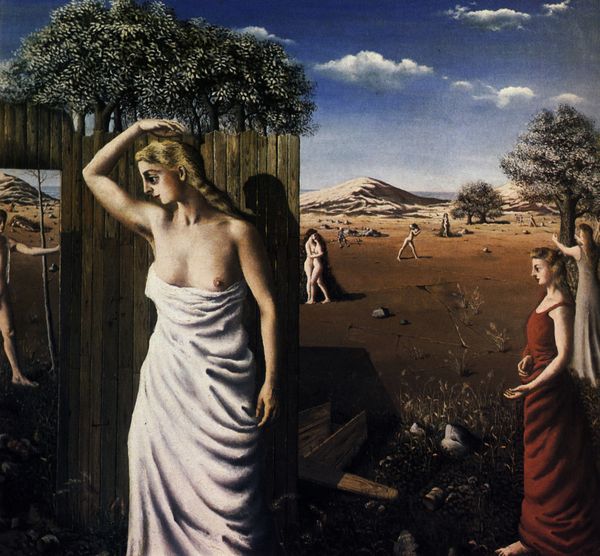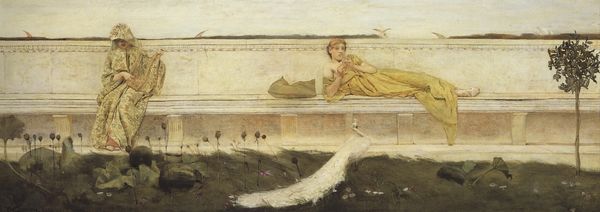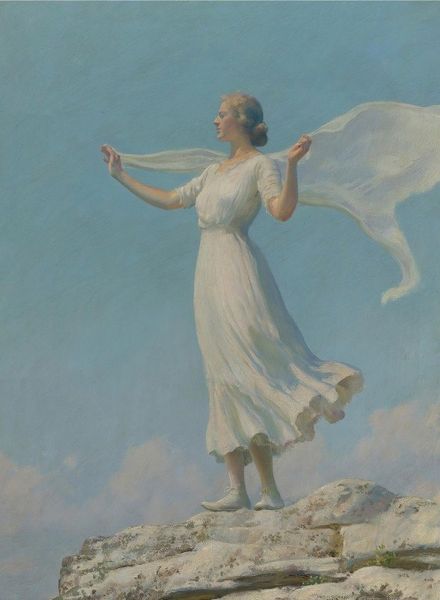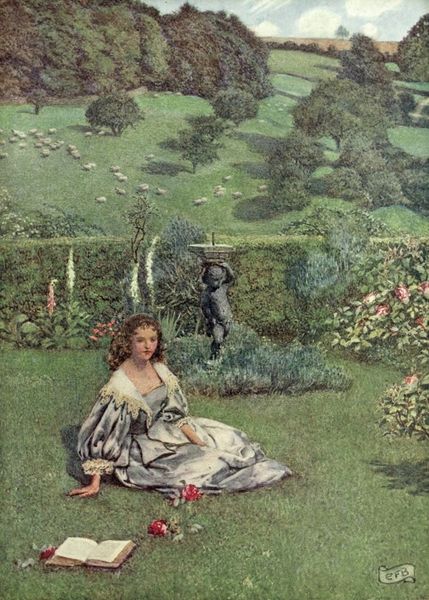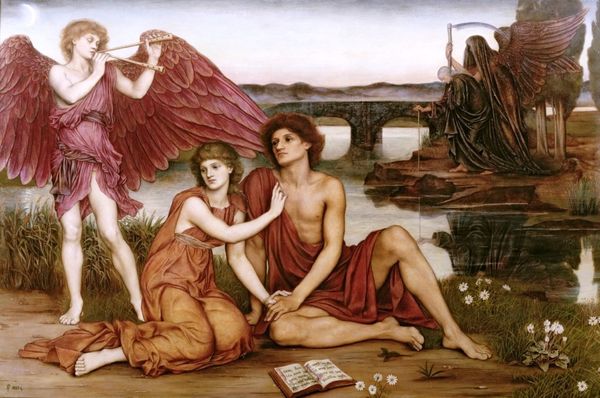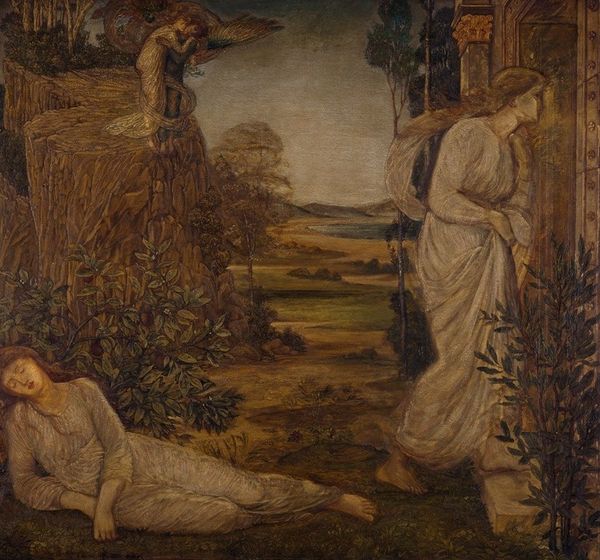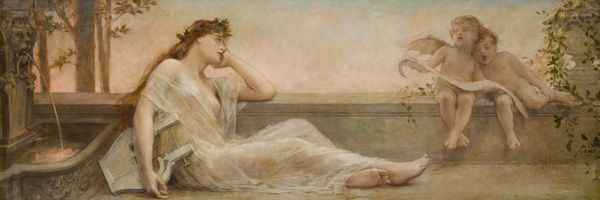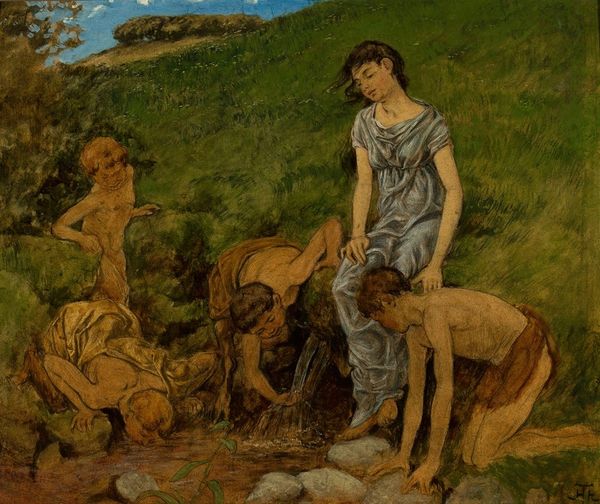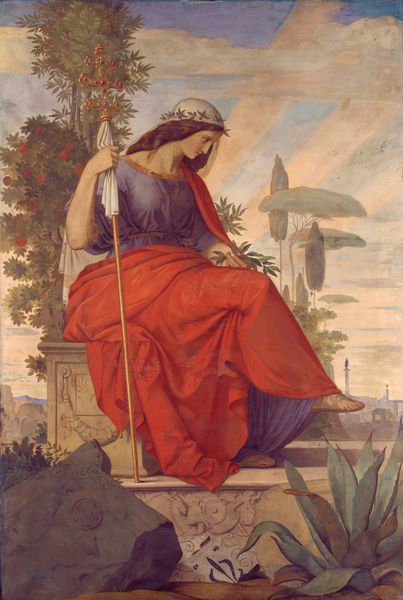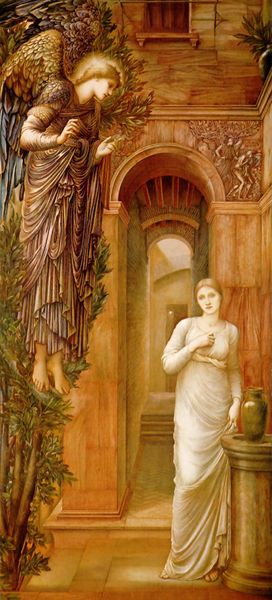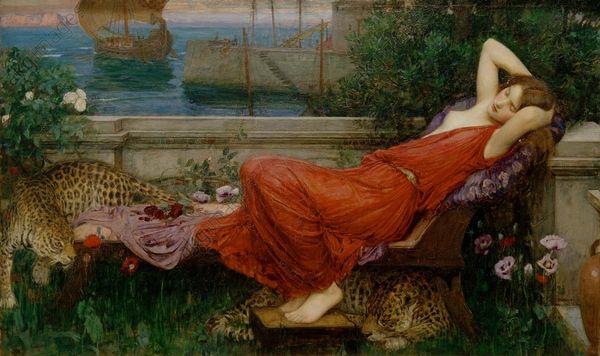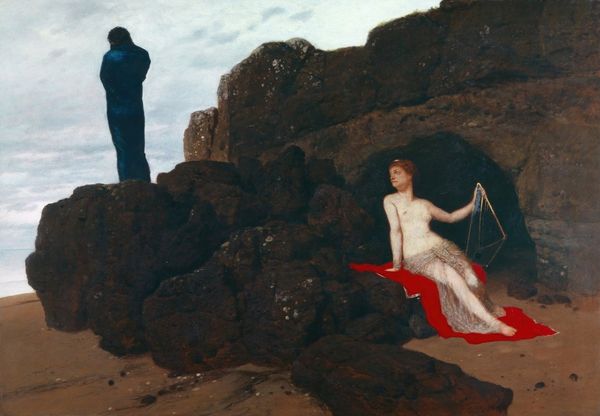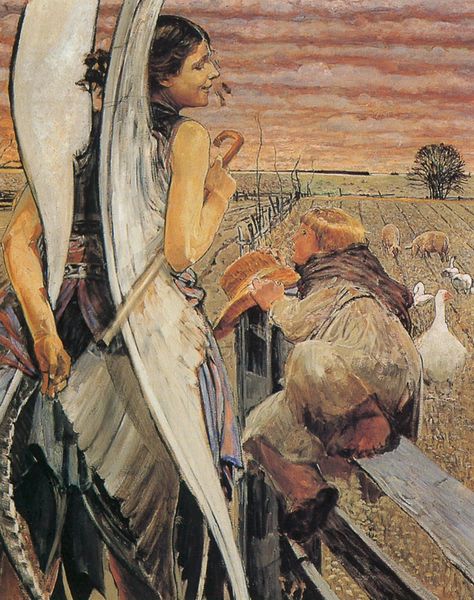
painting, oil-paint
#
allegories
#
allegory
#
fantasy art
#
painting
#
oil-paint
#
landscape
#
figuration
#
symbolism
Dimensions: 102.5 x 129.5 cm
Copyright: Public domain
Curator: Ah, this is "Hope" by Pierre Puvis de Chavannes, created in 1872. An oil painting residing here at the Walters Art Museum. What's your first take on it? Editor: There’s a melancholy beauty to it, a serene but muted palette. It almost feels… fragile, as though hope is barely clinging on. Curator: The fragility resonates. Consider the materiality, though. Puvis de Chavannes was known for a very particular technique— applying thin layers of oil paint to create a matte, almost fresco-like surface. This process flattened the picture plane. It brings the symbolic to the forefront, making it impossible to ignore the very idea of Hope that he is constructing, even in the context of landscape. Editor: The symbol is quite literal, isn't it? She's holding out a small, flowering sprig, the obvious signifier of nascent life. The rest of the landscape, however, with its ruins and grave markers in the distance, suggests otherwise, a stark landscape for the seeds of hope to grow within. It has deep resonances with a sense of loss after the Franco Prussian war. Curator: Those crosses remind us of the Franco Prussian War; the human cost, even after battles are over. The artist worked within devastated communities after the war. One might even see the ruin this young woman sits on as the remnants of war. These materials that are on display once created spaces for ordinary folk. There are the material ruins, of course, but the community bonds themselves would need rebuilding. This suggests a huge societal cost of industrial warfare on basic building blocks of humanity. Editor: It’s more than just physical though; consider her pose, the downward gaze, the loose, white garment. It is all quite vulnerable. White of course is a complicated color associated with peace, innocence and also surrender. In some lights this could easily become resignation or despair. This evokes both hope and profound loss in its imagery, a cultural memory embedded within the composition. What do you see as the function of the sprig? Curator: From a materialist viewpoint, that sprig is not just a symbol but a claim. An argument made out of form itself. To bring about change, work with the little things at hand, cultivate and sustain them. Notice also that there is only a sprig, in her hand – in order to become meaningful, those ruins and landscapes need cultivation by humans. The potential is right there, at her fingertips, but it must be developed. Editor: A fascinating point of view. Ultimately, what strikes me most is how effectively Puvis de Chavannes uses seemingly simple symbolism to convey complex emotional weight. Curator: Agreed. And by recognizing how material informs meaning, perhaps we see how that weight becomes something real in the world, shaping it, in fact.
Comments
No comments
Be the first to comment and join the conversation on the ultimate creative platform.
